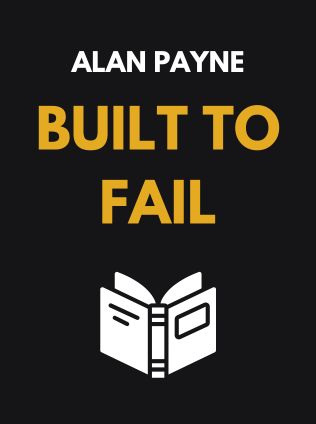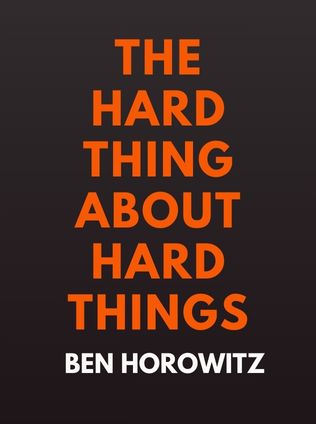
Built to Fail
The Inside Story of Blockbuster’s Inevitable Bust
By Alan Payne
Published 02/2021
About the Author
Alan Payne spent thirty-one years in the movie rental business, with the last twenty-five as a Blockbuster retail franchisee. He took over a small group of Blockbuster stores in 1993 and grew it into one of the largest and most successful chains in the company. He finally closed his last store in 2018, more than eight years after Blockbuster filed for bankruptcy. Payne's extensive experience provides him with unique insights into the rise and fall of one of the most iconic brands in American business history.
Main Idea
Built to Fail: The Inside Story of Blockbuster’s Inevitable Bust by Alan Payne provides a detailed account of how Blockbuster, once a dominant force in the video rental industry, was doomed by its own flawed strategies and leadership. Payne explores the internal and external factors that led to Blockbuster's decline and eventual collapse, offering valuable lessons for entrepreneurs and business leaders on what not to do.
Table of Contents
- Introduction
- America Goes to the Video Store
- Blockbuster Takes Charge
- That Little Old Grocery Store Company from Texas
- Welcome to Blockbuster
- The Decline Begins
- Death by DVD
- The Netflix You Do Not Remember
- It’s Over
- McDVD
- Fixing What’s Broken
- Full Death Spiral
- One Last Chance
- Conclusion
Introduction
Despite popular belief, Blockbuster was in severe financial trouble long before Netflix ever streamed a single film. Payne argues that it was Blockbuster's culture and leadership that led to its downfall, not streaming. He sets the stage for a detailed examination of how a company that dominated an industry could be in an almost constant struggle to survive.
“Blockbuster was phenomenally successful in its early years and made thousands rich beyond their wildest dreams. But it was built to grow and nothing else.” - Alan Payne
Payne sets the stage for a detailed examination of how a company that dominated an industry could be in an almost constant struggle to survive. This introduction highlights the core issues that plagued Blockbuster and foreshadows the deep dive into the company's history and decisions that follows.
America Goes to the Video Store
In the 1980s, the video rental industry exploded due to landmark court cases that established the right for video rental stores to rent films. This era saw the rise of many video rental businesses, but none could keep up with Blockbuster. Payne explains how Blockbuster capitalized on this opportunity and set the stage for its dominance.
Video rental businesses began to flourish, with many companies opening multiple stores. Blockbuster, under the guidance of Wayne Huizenga, took a unique approach by aggressively acquiring other video rental chains and rapidly expanding its store count. This strategy helped Blockbuster become the largest and most recognized video rental brand in the United States.
Blockbuster's success was driven by its ability to offer a wide selection of movies, convenient locations, and a standardized store experience. Customers knew what to expect when they walked into a Blockbuster store, which contributed to the company's rapid growth and popularity.
Blockbuster Takes Charge
H. Wayne Huizenga bought controlling interest in Blockbuster when it had just 20 stores. His strategy was aggressive expansion, buying stores, production companies, and even land for a theme park. However, these investments failed, and Blockbuster missed opportunities to improve its core business. Payne highlights how Huizenga’s strategy of growth without operational improvements set Blockbuster on a path to failure.
“Blockbuster’s history could have been very different had it used this time and flood of cash to commit more resources to improve the business instead of having a singular focus on growth.” - Alan Payne
Huizenga's focus on growth at all costs led to a series of acquisitions and investments that ultimately did not pay off. Instead of focusing on improving the customer experience and operational efficiency, Blockbuster became preoccupied with opening more stores and expanding into unrelated businesses. This lack of focus on core competencies left the company vulnerable to competitors who were more agile and customer-focused.
Sign up for FREE and get access to 1,400+ books summaries.
You May Also Like
The Lean Startup
How Today's Entrepreneurs Use Continuous Innovation to Create Radically Successful Businesses
By Eric RiesWho Moved My Cheese?
An Amazing Way to Deal with Change in Your Work and in Your Life
By Spencer Johnson, M.D.Make Your Bed
Little Things That Can Change Your Life...And Maybe the World
By William H. McRavenThe Ride of a Lifetime
Lessons Learned from 15 Years as CEO of the Walt Disney Company
By Robert IgerThe Hard Thing About Hard Things
Building a Business When There Are No Easy Answers
By Ben Horowitz



















